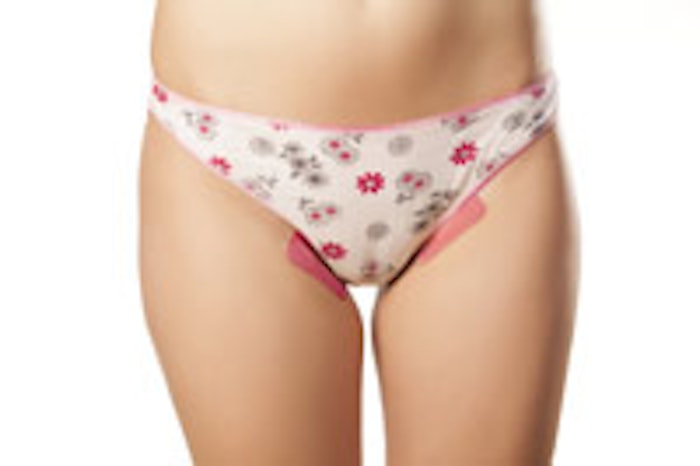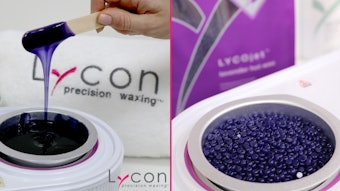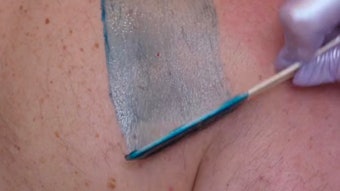
If you’re reading this, you fall into one of two categories: those who have been involved directly in a sticky situation or those hoping they never will. Unfortunately, if you wax or plan to wax, sooner or later you will come face to face with a sticky situation.
Most have heard at least one waxing horror story that chills you to the bone—the kind of story that turns clients curious about waxing into clients who will never get waxed for fear of having the same experience. These stories have become legendary in the waxing community. and they grow bigger and hairier with each telling.
From the experienced to the inexperienced, when these incidents happen, it seems to catch all involved off-guard. Somehow, skin care professionals have been conditioned to believe that waxing is a simple service that always goes smoothly—pun intended—and if something goes wrong, it’s completely out of the ordinary. This mind-set is totally ridiculous and unrealistic.
Waxing is all about trouble-shooting—learning what to wax, what not to wax, what wax to use, along with the proper techniques. Not everyone should be waxing, especially if they don’t understand that waxing requires a clear understanding of skin, hair, wax, waxing technique, and how to get out of these mystical and legendary sticky situations.
It’s time to pull back the curtain on the big, bad waxing wizard. Let’s take a microscope to the top three sticky situations, and learn how to solve them—and, in most cases, prevent them from happening altogether.
1. The wax gets sticky and goopy
When this happens to you, it’s like an out-of-body experience, meaning you want out of your body—now! There is almost nothing as terrifying as a sticky, goopy, unremovable waxing nightmare.
Why does wax get sticky and goopy in the first place? The temperature of the skin plays a big part. Whether it’s of the hard or soft variety, wax begins to dry when it is applied to the skin, and hard wax typically dries quicker than soft wax. However, when the skin is warm, it can greatly slow or stop the drying process and, in fact, raise the temperature of the wax, creating an even
stickier, goopier mess.
This issue most commonly occurs in the bikini area. In particular, the labia is the most common area for wax to turn into a sticky mess because the labia is a very warm part of the body.
In fact, anything that increases body heat can increase the sticky factor. If it’s a warm day outside, if your room is unusually warm, or if your client is just coming from a workout at the gym—all of these can create the perfect waxing storm. Additionally, when wax is applied incorrectly to an area with longer hair—1/2 inch or longer—it can become matted in the hair, creating a sticky situation.
If you don’t know how to deal with this issue, you will spend a lot of time pulling and tugging at your client in an attempt to get the wax or wax strip off of them. This type of pulling and tugging is not only mentally stressful, it puts a great deal of stress on the skin and can cause severe damage.
These simple tricks will have you on your way to getting unstuck in no time.
- When using soft wax, apply hard wax over the soft wax, covering it completely. Allow the hard wax to dry and then remove it. The hard wax will pull the soft wax up with it.
- When using hard wax, apply a small amount of powder to the top. The powder will absorb the moisture and allow the wax to dry. After a few seconds, you will be able to remove the wax.
- When working with longer hair, apply wax to the root only. This prevents the wax from matting in the excess hair. You can also trim the hair.
2. You waxed off part of or all of an eyebrow
Waxing an eyebrow off is easier to do than you might think. Why is this such a common occurence?
- Once you put the strip down while using soft wax, you can never really be sure where the wax will end up, which could potentially result in pulling off an entire brow in just a few seconds.
- Soft wax is more likely to drip off the stick into hair you didn’t intend to wax off.
What can be done to fix this sticky situation or even prevent it from happening? Use hard wax for the brows.
It takes a bit of getting used to, but one of the many great benefits of hard wax is that it stays where you put it. Once you lay it down, it isn’t going to migrate into hair you don’t want it to be in. And because it is low-temperature, it’s less likely to just fall off the stick.
If soft or hard wax gets in hair you don’t want it in, you can remove the wax and start over without removing the hair, depending on the amount of wax to be removed, with the following steps:
- Take a dime-sized amount of pre-oil or balm, and a clean cotton round;
- Saturate the cotton round with oil or balm and lay it over the wax to soften it, leaving on for a minute or two;
- Gently work the wax out of the hair with the cotton round; and
- Once wax is gone, clean the area to remove all oil and start over.
If the damage has already been done, and there is no saving the brow, it’s time to get creative. This is one of the reasons carrying brow products comes in handy. Give your client a lesson in the art of filling in the brows, and send her home with a nice new brow pencil or powder. They will appreciate your eagerness to rectify the situation and probably be a client for life.
3. The labia or scrotum is torn
This is the most serious of the sticky situations. To clarify, there is a difference between lifted skin and torn skin.
Lifted skin is when a thin layer of dead cells are removed, revealing live cells underneath. This is like an abrasion on the skin. Typically, there is no blood involved and often, you don’t even know that skin has been lifted.
Torn skin is just what it sounds like. A tear has been created in the skin, causing bleeding and often the need for stitches—there is no mistaking a torn labia or scrotum. There are only two reasons why the labia or scrotum can be torn during waxing: poor technique on the part of the technician, or the client has undisclosed contraindications, such as medications or conditions that have caused the skin to be compromised.
For the most part, improper technique is the No. 1 cause of a torn labia or scrotum, and it can happen regardless of the wax used, but is more common with soft (strip) wax.
How does poor technique cause tearing of the skin?
- Not holding the skin taut is poor technique. The skin on the labia and scrotum is looser than other areas and needs to be held taut to protect it and keep it from snapping up when the wax is removed.
- Not keeping the hand parallel with the skin upon removal is also means for disaster. When you pull up and away from the body, this also pulls the skin up and away, making it more likely for the skin to be torn.
As a technician, the following can be done to prevent tearing of the skin: hold the skin taut; keep the hand parallel to the body upon removal of the wax at all times; and always have the client fill out a health history form to rule out possible contraindications.
What you don’t know about waxing is what can get you into trouble. It involves more than just apply and remove, especially with the brows and bikini area. Intimate waxing requires a special skill set and expertise that can only be gained from the proper training and practice. If you take the time to invest in your education before attempting these services, you will be able to avoid the pitfalls discussed here, as well as many others.
Crickett is a licensed esthetician and educator in the art of Brazilian waxing and eyebrow design. She is also the creator of several educational waxing DVDs and a contributing author for industry magazines.










